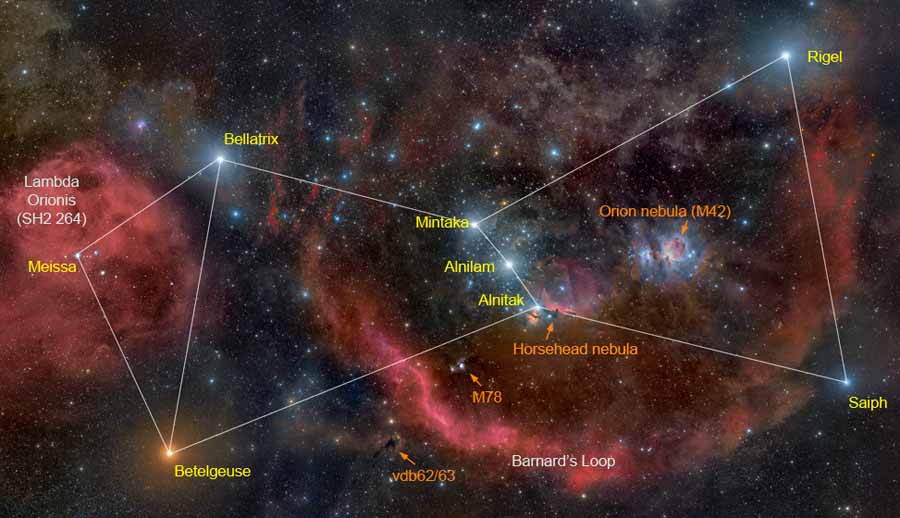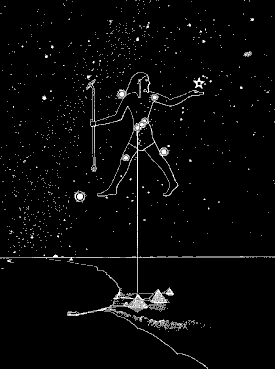

January 2011
From now until December 21, 2012, you are going to hear many doomsday scenarios - some plausible - few credible - most not possible. They all lead to an inner knowing that the Earth experience as we know it, is about to change. We see it unfolding with natural disasters, weather patterns, human and animal behavior, pole shifts, human consciousness, and more.
On the celestial list of doomsday events that won't happen and destroy Earth we find:
Betelgeuse going Supernova and destroying Earth
Betelgeuse is the ninth brightest star in the night sky and second brightest star in the constellation of Orion, outshining its neighbor Rigel only rarely.
Distinctly reddish-tinted, it is a semiregular variable star whose apparent magnitude varies between 0.2 and 1.2, the widest range of any first magnitude star. The star marks the upper right vertex of the Winter Triangle and center of the Winter Hexagon.
Classified as a red supergiant, Betelgeuse is one of the largest and most luminous stars known. If it were at the center of our Solar System, its surface would extend past the asteroid belt possibly to the orbit of Jupiter and beyond, wholly engulfing Mercury, Venus, the Earth and Mars.
However, with distance estimates in the last century that have ranged anywhere from 180 to 1,300 light years from Earth, calculating its diameter, luminosity and mass have proven difficult. Betelgeuse is currently thought to lie around 640 light years away, yielding a mean absolute magnitude of about -6.05.
In 1920, Alpha Ori was the first star (after the Sun) to have its angular diameter measured. Since then, researchers have used a number of telescopes to measure this stellar giant, each with different technical parameters, often yielding conflicting results.
Current estimates of the star's diameter range from about .043 to .056 arcseconds, a moving target at best as Betelgeuse appears to change shape periodically. Because of limb darkening, variability, and angular diameters that vary with wavelength, the star remains a perplexing mystery.
To complicate matters further, Betelgeuse has a complex, asymmetric envelope caused by colossal mass loss involving huge plumes of gas being expelled from its surface. There is even evidence of stellar companions orbiting within this gaseous envelope, possibly contributing to the star's eccentric behavior.
Astronomers believe Betelgeuse is only 10 million years old, but has evolved rapidly because of its high mass. It is thought to be a runaway star from the Orion OB1 Association, which also includes the late type O and B stars in Orion's belt - Alnitak, Alnilam and Mintaka. Currently in a late stage of stellar evolution, Betelgeuse is expected to explode as a type II supernova, possibly within the next million years.
